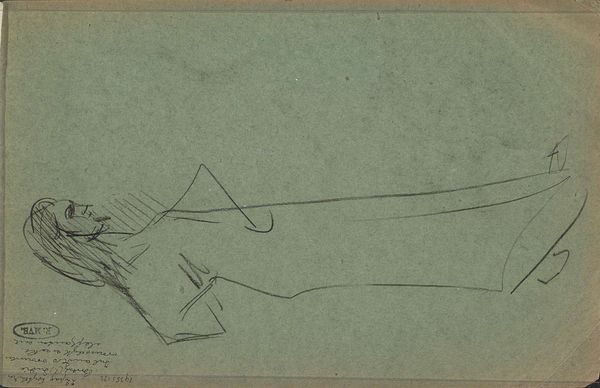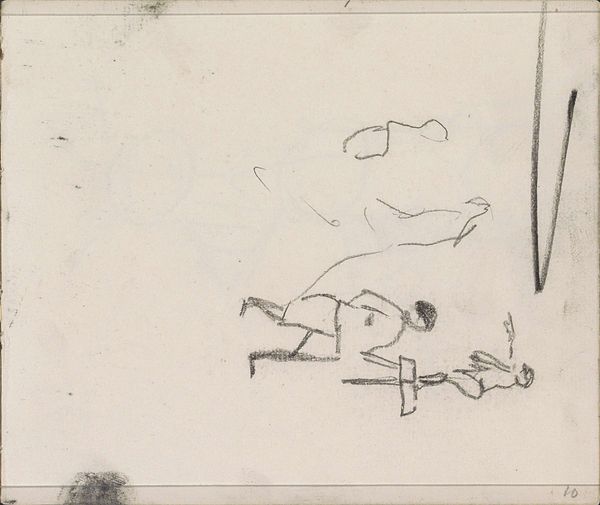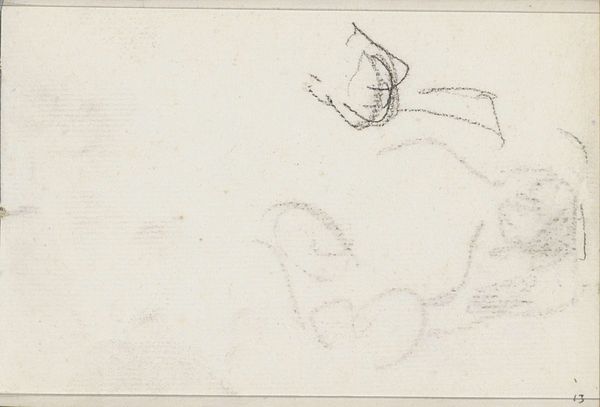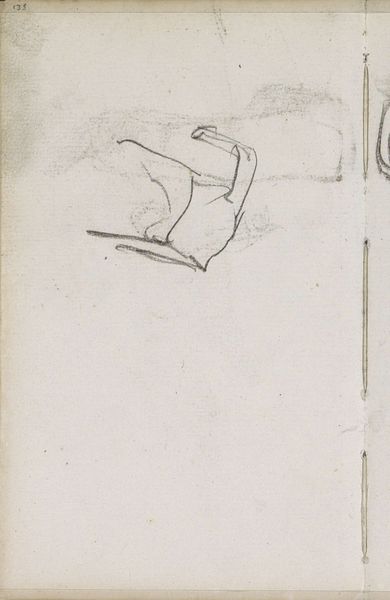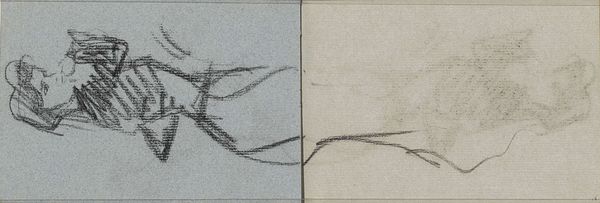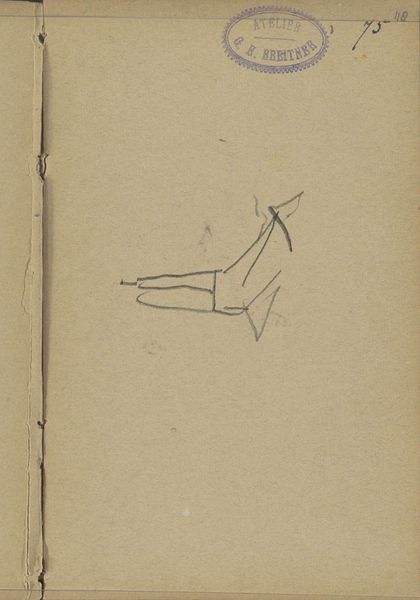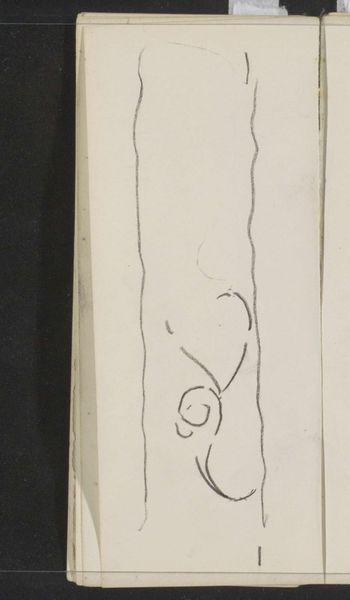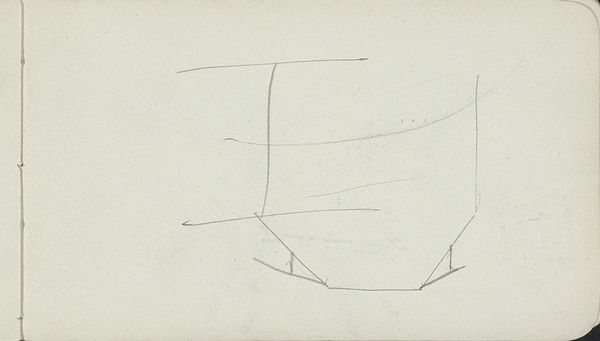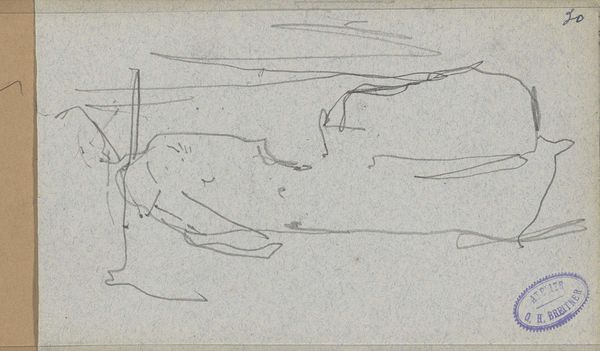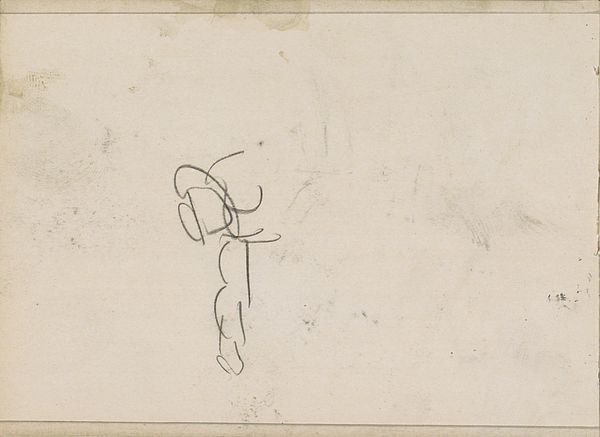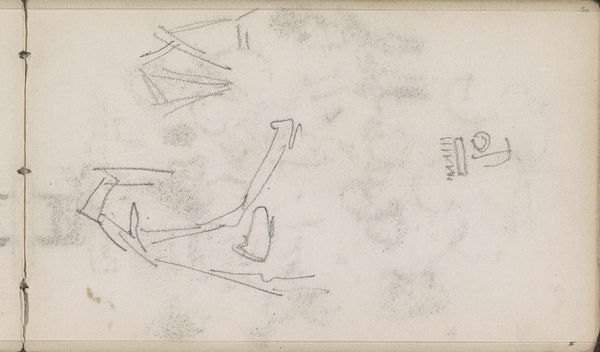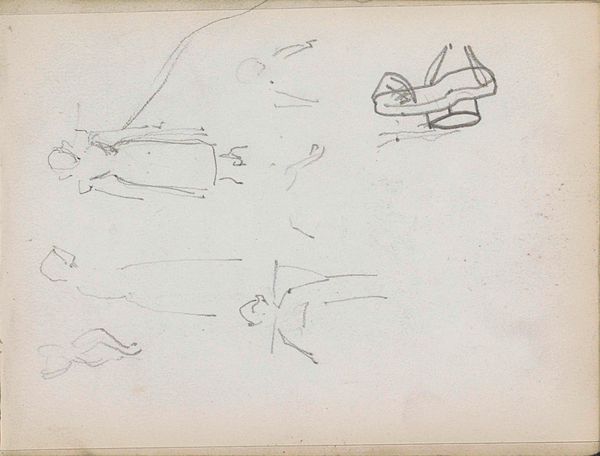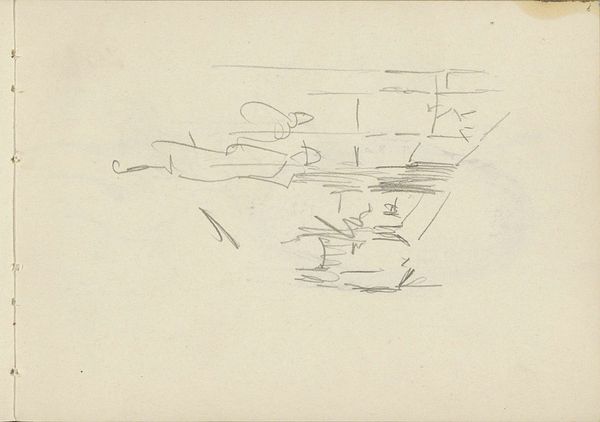
drawing, ornament, pencil
#
drawing
#
amateur sketch
#
ornament
#
light pencil work
#
thin stroke sketch
#
sketched
#
incomplete sketchy
#
personal sketchbook
#
idea generation sketch
#
geometric
#
pencil
#
sketchbook drawing
#
sketchbook art
#
initial sketch
Copyright: Rijks Museum: Open Domain
Curator: This is "Ornament," a pencil drawing by George Hendrik Breitner, dating from around 1883-1885. It's part of the Rijksmuseum's collection. Editor: My first thought? Fleeting. The lines are so delicate; it feels like a captured idea, quickly sketched before it disappeared. Curator: Indeed, it's more of an initial sketch, maybe for a larger decorative work, possibly intended for some architectural feature of the time. It invites questions about the nature of ornamentation itself in the late 19th century, during a period of shifting industrial practices. Editor: Let’s focus on what we see: three distinct sections or motifs. Notice the geometric forms on the left and the curves almost evoking organic, plant-like tendrils – pure geometry meets a touch of the natural world. It's like three possible movements contained within a whole. Curator: And that's crucial. The piece showcases the blending of design traditions in that era, mirroring debates around handmade versus mass-produced ornamentation, as many architects and artists tried to preserve older craft methods when metal and machine became dominant materials. Editor: And the very choice of pencil. Pencil emphasizes the initial moment, the lightness of the idea, and the quick movements. How much labour does it require to draw something like this, given it is part of someone’s personal sketchbook? Curator: It's tempting to imagine Breitner experimenting, generating design ideas within the more personal, uncontrolled sphere of the sketchbook versus commissioned projects. These patterns echo design trends, reflecting changing social tastes and consumer demand of the time. The role of ornament was intensely debated then in relation to morality and modernity. Editor: Looking closely at the central diamond shape – it’s incomplete, the lines are hesitant. He leaves us clues to his process, his visual exploration. Curator: Exactly, and thinking about materials further, this unassuming piece is a direct material connection to Breitner's creative thinking. Editor: What I find captivating here is seeing how forms are distilled to their essence. Curator: For me, this study serves as a tangible document connecting aesthetics and industrial concerns of that period.
Comments
No comments
Be the first to comment and join the conversation on the ultimate creative platform.
